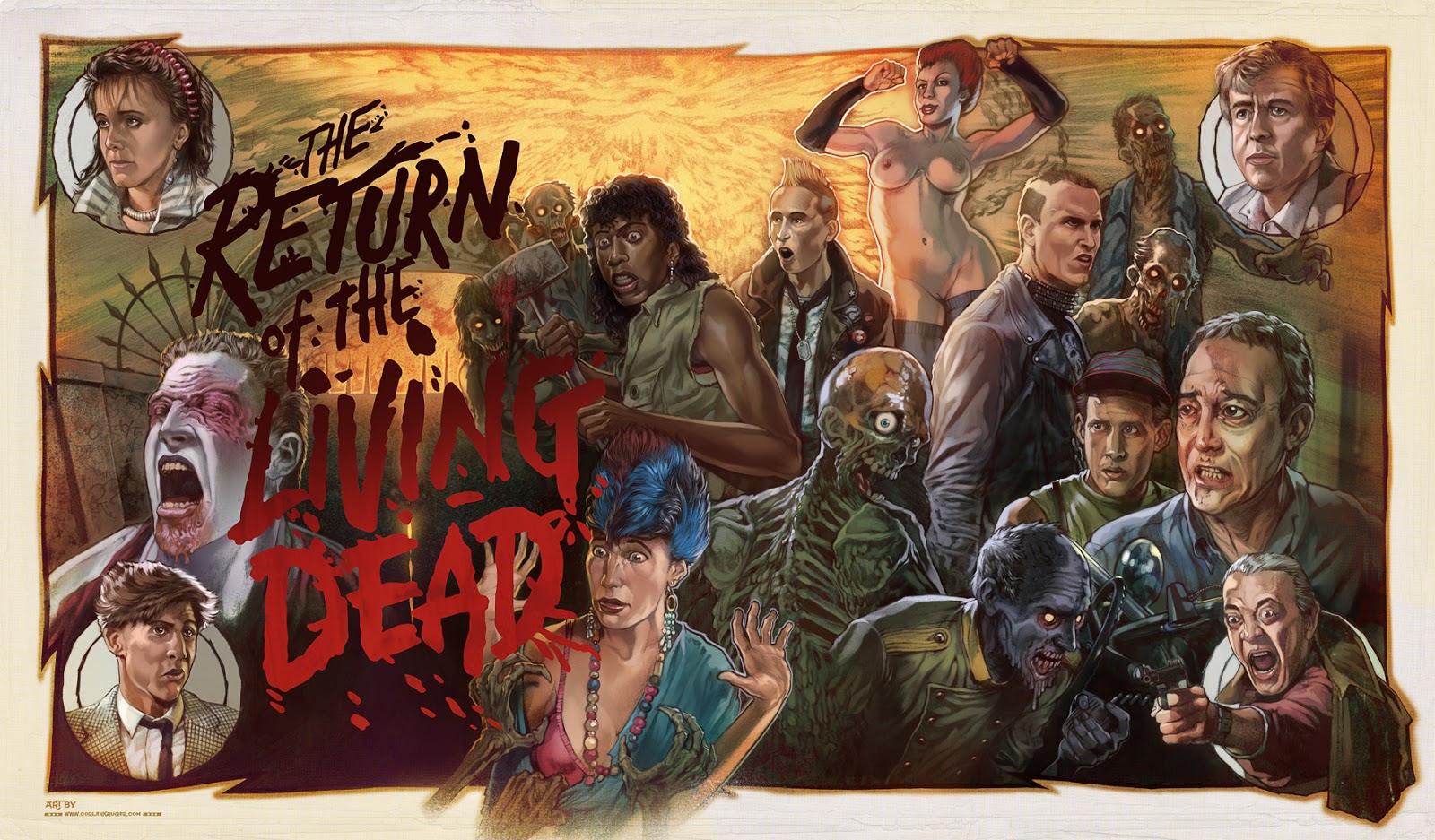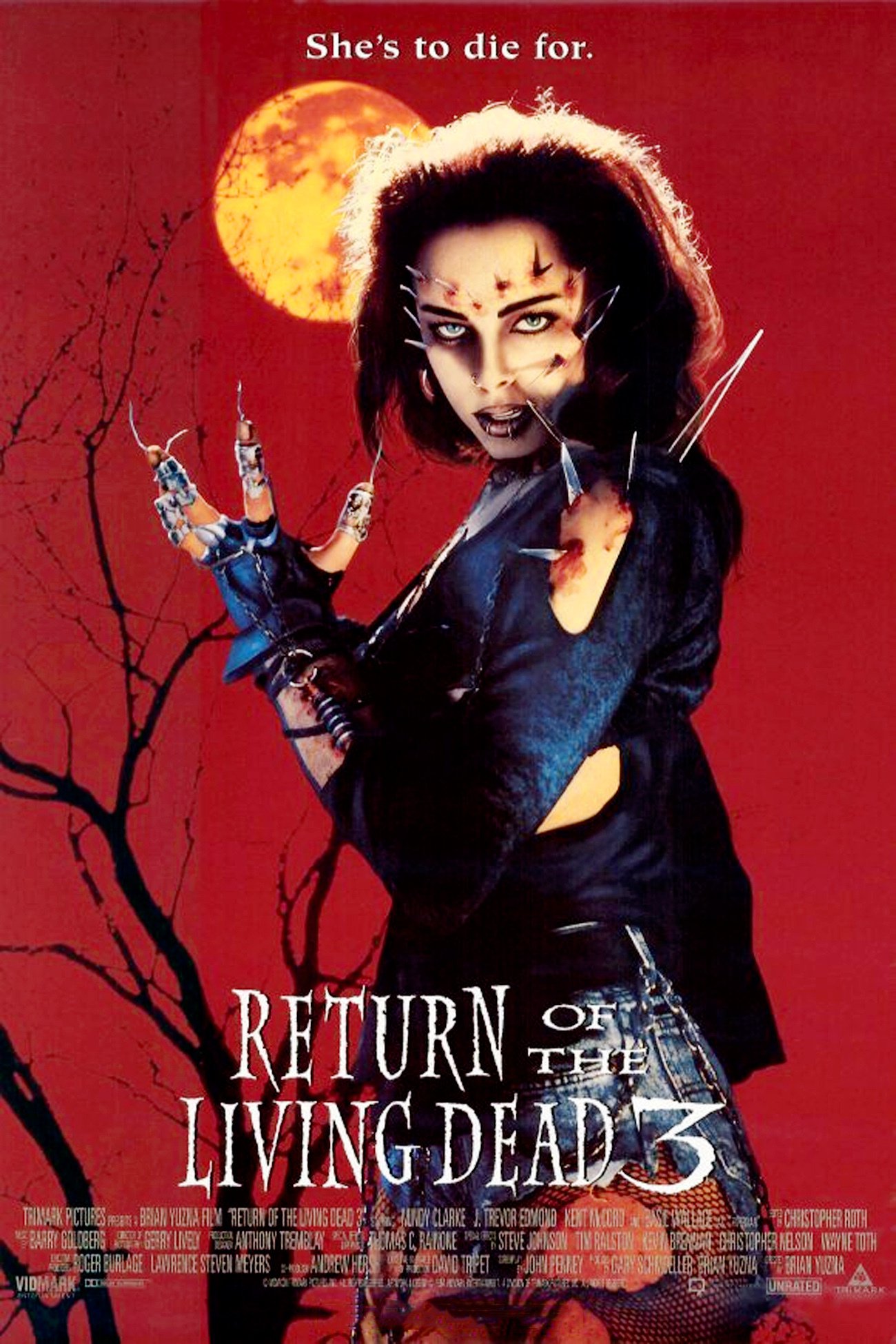

Karen and Mathews’ respective characters in the first two films get infected through exposure to fictional airborne chemical Trioxin. The one effective aspect of the first two films that Return of the Living Dead III does successfully carry over is that of the recently infected slowly realizing the horror of their situation before their minds are completely given over to an unholy craving for brains. While Evil Dead II, released a year earlier, succeeded by amplifying the original’s lunacy and slapstick, there is considerably less verve in Return of the Living Dead Part II, and it currently languishes with a (perhaps slightly unfair) 0% rating on Rotten Tomatoes. It was a strange, ineffective decision that resulted in a pointless rehashing, made all the more perplexing by the fact that actors James Karen and Thom Mathews were back in the sequel as different characters, playing bumbling graverobbers rather than hapless warehouse workers. Return of the Living Dead Part II (1988), however, wasn’t so much a sequel as it was a retelling of the same story in a slightly different way, a la Evil Dead II (1987). The success of the punkish The Return of the Living Dead led to inevitable sequels, of which there are four. Chop the head off one of these ghouls and now you’re stuck fighting two pieces of zombie. Gone was the classic “destroy the brain or remove the head” defense. Meanwhile, sequels to The Return of the Living Dead, which was adapted from Russo’s novel of the same name, leave much to be desired, especially with this silly third film, released in 1993.Īfter grimy horror maestro Tobe Hooper dropped out of the first feature in order to work on Lifeforce, Dan O’Bannon was tapped and went on to direct one of the better horror-comedy romps of the ‘80s, a film which not only introduced the brain-eating zombie trope, but also introduced the world to fast zombies, talking zombies and the notion that zombies are virtually unkillable. Romero, of course, churned out two more horror classics with Dawn of the Dead (1978) and Day of the Dead (1985). As part of their split, the two agreed that Romero’s subsequent films would simply include the Dead in their titles and Russo got to keep the Living Dead nomenclature. Russo, who co-wrote 1968’s Night of the Living Dead. The original film came about because of creative differences between Romero and John A. In terms of tone, this third film is nearly as far removed from the first two movies as The Return of the Living Dead is from George A. For better or worse, and despite its flaws (which are legion), this third installment does try new things-namely ditching the camp and comedy of its predecessors and injecting a contrived romance angle.

Do viewers of a flick called Return of the Living Dead III really need to be briefed on how zombies work? Yet there it is, just over a half-hour into the film: an army officer laying down the expository nugget that, “If she attacks him, he becomes like her.” Then again, this film’s forebear, the 1985 cult classic The Return of the Living Dead, did introduce some novel approaches to the archetypal zombie, even spearheading the “Brains!” trope.


 0 kommentar(er)
0 kommentar(er)
